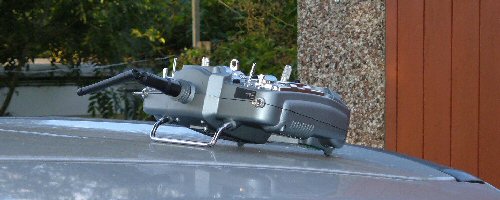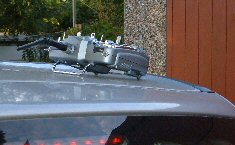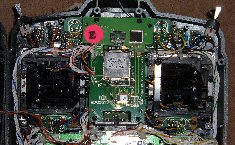|
|||
|
|
|
||
| View Shopping Cart |
| Home |
| Guides Available |
| About the Author |
| FAQs |
| Testimonials |
| Articles |
| Contact Andrew |
| Terms & Conditions |
| Mailing List |
| Links |
 |
 |
More
high quality information absolutely free with every
Gibbs Guides newsletter. Sign
up now!
My transmitter's got wet. Is it still safe to use?
Andrew Gibbs answers a question from Bill Pethers

Andrew, I accidentally left my transmitter on my car roof overnight. It hadn't rained for about 4 days, but that night it chucked it down! So therefore, one very damp DX7 was found next morning on the car roof.
First the battery was removed and covers lifted to reveal very little water inside, although there was some misting of the display panel. I carefully mopped up any water with paper towels and put the transmitter to dry all in the sunshine (indoors!). By some miracle all seems to work and Tx controls my models perfectly, including range checks etc. But here comes the crunch question. Do I fly with it?
I know water and electricity don’t
normally mix, but it being fresh rain water only and nothing
was switched on until all was dry I would like to know
the risk. Many thanks for listening to my tale of woe
and any hints would be much appreciated. And yes, after
all these years I should know better and look after my
kit more responsibly! Bill
Andrew's Answer
Hi Bill, I’m sure you are not the first to have
had this sort of thing happen! You clearly did the right
thing to remove the battery and dry the transmitter out
straight away as an initial response.
I've heard of several cases of cell phones (mobile phones) being made wet, and these all worked okay after being dried out. Based on this, perhaps the effects of exposing your transmitter to fresh water might not be very significant, though its impossible to be sure.
Let's consider each aspect of the transmitter. Most electronic components are encased in plastic which should render them tolerant of contact with water. Another aspect of this is the possibility of corrosion of metal parts such as the circuit board and the legs of components. However, as you say only a little water penetrated the case, this would also seem to pose a low risk. If the transmitter interior remained largely dry, in particular the transmitter’s circuit board and stick potentiometers, I’d say the risk of a future malfunction from this area of the transmitter was probably very low.
However, the transmitter was in the rain for some time, so water may have penetrated the switches. Any water in here may be difficult to get out, so it may still be there. The switches are unlikely to be designed to withstand long term water exposure, so I’d say this is probably the area of biggest risk concerning a future malfunction.
| It's quite easy to forget about objects placed on a car roof - especially if the roof and the object are similar in color! (Click image to enlarge & for more information). | Bill got lucky with his DX7, the inside of which is seen here. (Click image to enlarge & for more information). |
I appreciate you are asking for my opinion about risk and that you understand that I can’t tell you whether it will be okay to use the transmitter or not – that is of course your decision to make. The safest course of action would clearly be to send your transmitter off to a suitable service facility approved by the manufacturer and ask for it to be thoroughly checked out. My guess is that the manufacturer would probably do four things:
1. Inspect the electronics carefully under a magnifying glass for any signs of corrosion.
2. 'Soak' test the transmitter by letting it run for a number of hours (sorry about the apparent reference to water – this phrase is actually the industry term used for an extended test under power!)
3. Test the transmitter electronically for performance – range etc.
4. Inspect the transmitter for evidence of water damage and replace if necessary – the cost of this could exceed the value of the transmitter. Note that it may not be possible to inspect some items; switches and potentiometers for example may be impossible to open up without causing damage.
It’s difficult to assess the risk of continuing to fly with this transmitter, even though it does appear to work perfectly at the moment. The risk is of course that the transmitter could stop functioning correctly while it’s in use at some future date. Probably the more time that passes with the transmitter still working, the less the risk that it will malfunction at a later date.
Depending on what the manufacturer said, if it was my transmitter, I’d probably write it off, at least for flying anything other than lightweight park flyers, as the risk of a future malfunction is unknown. It may be that you have an insurance policy that would cover the cost of replacement. Even if not, the cost of replacement would probably be low compared to the cost of a lost model, plus – most importantly - there could be the risk of a model going out of control and injuring somebody, or worse. If you did then decide to fly with this transmitter you could start with a small, light model which represents little risk to passers by if it crashes and little financial risk to you.
I hope this is of some help. Please do let me know how you get on.
Kind regards, Andrew

